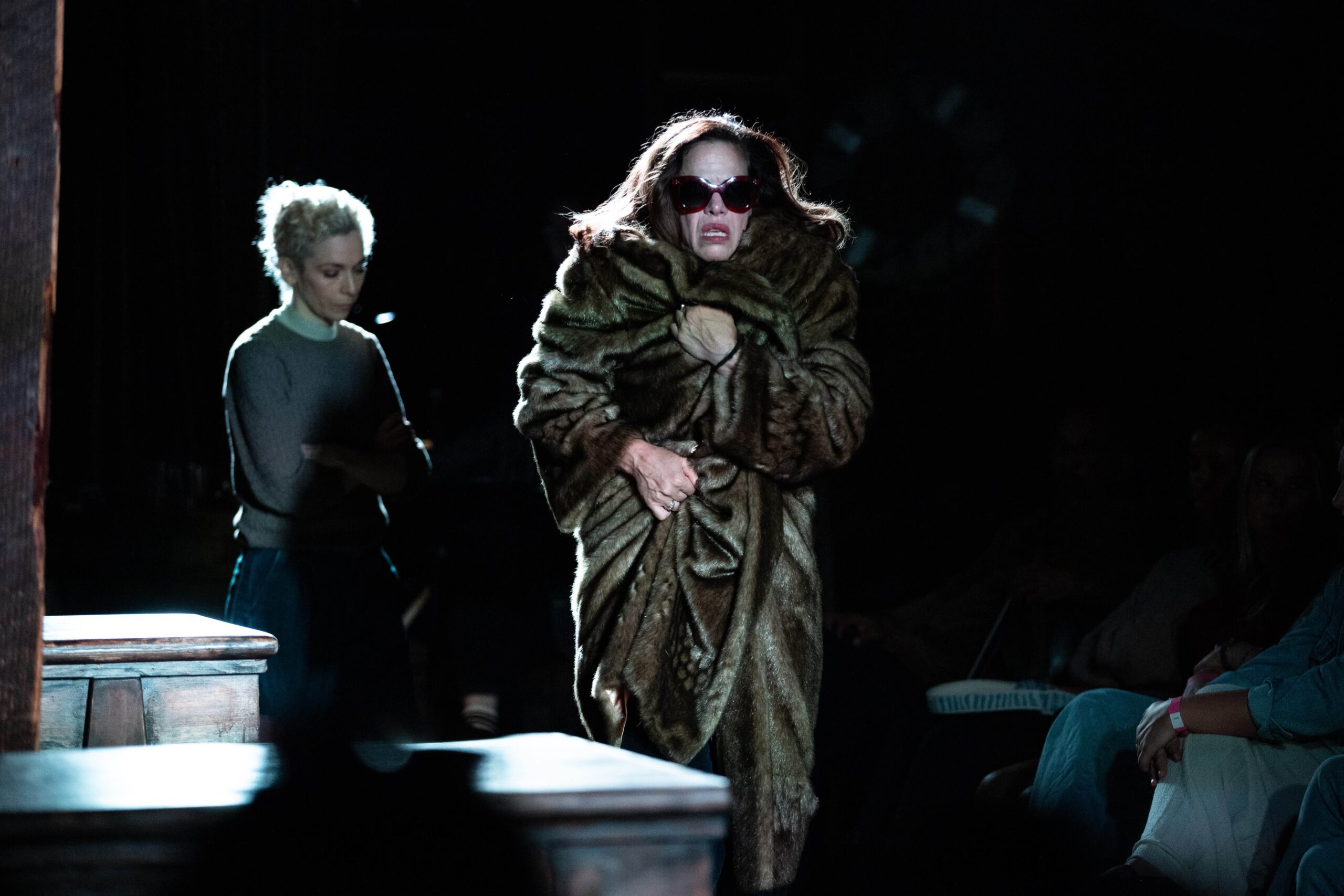It smells like harbor, I thought as I walked out to the end of the pier to which the barge now known as the Waterfront Museum was docked. Unmistakable were they, even for someone like me — maybe particularly for someone like me, who’s always lived far enough from the ocean to never get used to its sensory impressions, but always close enough for occasional day trips, and, thus, associate its smells, sounds and visuals with a few, vivid memories — the aromas of salt, seaweed and tarred rope.
On this October evening, and for most October evenings, the Waterfront Museum would temporarily take on a new role, as the stage (pardon the pun) of The Wind and the Rain: A Story About Sunny’s Bar. The play, which debuted at the end of September and will run until the end of October, is set against the backdrop of when Superstorm Sandy struck New York and flooded Sunny’s, a community staple in Red Hook for over a hundred years. It portrays Tone Johansen (played by Jen Tullock), the Norwegian transplant who married Sunny (played by Pete Simpson) and who’s been the face of the bar for years, as she fights to save the bar from water and greedy relatives.
The show is, in essence, a love story: Most prominent, of course, is the relationship between Tone and Sunny, but the narrative jumps back and forth in time and the audience also gets to follow the relationships of Sunny’s relatives as they, as immigrants over a century ago, settle in New York. But it is also, through narrative and design, a love letter to Tone, Sunny, the bar, and Red Hook. Yet, this was more than merely a play, more than the actors and the music; this was a fundamentally human experience, and for me, it turned out to also be a profoundly personal one.
I admire the courage of director Jared Mezzocchi and playwright Sarah Gancher. When I spoke to them in September, they made it clear this was a play for the community as much as it was about the community. But even more, it is a play made by the community. Throughout the play, audience members, one after another, are invited to read a one-liner projected onto the walls. Occasionally, attendees are also brought onto the stage to briefly become part of the supporting cast; they play young Sunny, a corrupt law enforcement officer during prohibition, a loving couple out for a drink. Each participant’s tone, confidence and energy become part of the play, making each night unique, unable to be replicated. It is bold to do this, to give away control and accept unpredictability. But it works, and the trust put in us as audience members makes for a beautiful, communal creation.
Mezzocchi and Gancher have created a marvelous story together, drawing from interviews, personal experiences and historical documentation to build a narrative that honors the truth without staying chained to it. I never felt the need to question if a scene was true or not, or how much had been fictionalized, as the emotions evoked established a truthfulness beyond what any fact could do. This was never more true than when the stage turned into a flooded bar during Hurricane Sandy. As someone who didn’t live in New York at the time and had only heard recounts of what Sandy was like, these scenes gave me a newfound understanding of the intensity of the flood.
The story traverses eras, from present-day to Brooklyn’s first settlers, from prohibition to the ice age. This nonlinear narrative is never confusing, however, and some of the play’s most memorable moments occur when moments, separated by time, come together and play out simultaneously.
Indeed, the seamless time jumps are mainly due to the performances of the quartet of actors. Cast not for specific roles but, according to Mezzocchi, for being “strong collaborators and theater makers,” Tullock and Simpson and the second half of the ensemble, Jennifer Regan and Paco Tolson, bring the best of themselves and bring out the best of the audience. It is easy to understand the choice of actors: They move seamlessly between time and space and between narration and characters, caring deeply about both the story and us onlookers.
Moving the story forward and bringing the audience together is also musician Pete Lanctot, who on this night was accompanied by local musicians Adam Winski on banjo, Sarah Klein on ukulele, and Alex Deane on fiddle. (For every show, new local performers get to be part of the play.) Just as music has become an integral part of Sunny’s Bar, it plays an equally important role in this play. Although there is technically no singalong, I found myself time and time again wanting to join in. (I settled for tapping my feet to the rhythm.)
This was an immense, almost overwhelming experience. Not because of the quality of one singular thing, or even a combination of things, necessarily, but because it made us all one. I could continue to praise The Wind and the Rain for its individual parts — the actors, the music, the storytelling and the design all certainly deserve it — but it wouldn’t make this experience justice.
So, I’ll just say this: I grew up in a country where I didn’t know my neighbors very well, and where neither of my parents or any of the other adults in my life (or me, once I got old enough) had that spot they kept coming back to because they knew they’d be around friends; today, I live on the Upper East side of Manhattan in a 4-story apartment building where neighbors change with the seasons and words beyond “Hey, how are you” are rarely exchanged; but, for one night, I was a Red Hook native, a Sunny’s regular, a member of the community. I was home. There is no higher praise I can give.
The Wind and the Rain: A Story About Sunny’s Bar is not the only play showing in Red Hook this fall. For three days (and four performances) only, Nov. 8, 9 and 10, the performing arts group Drama of Works presents The Grand Guignol Theater for Children at Brooklyn Waterfront Artists Coalition. The play features shadow puppet renditions of three of Edgar Allan Poe’s works, and Drama of Works also uses a toy theater cemetery stage to warn children of the danger of misbehaving. Despite its title, The Grand Guignol Theater for Children isn’t actually for children — at least not young ones — as it contains “animal cruelty, children being set on fire and other scary stuff,” according to the press release. The play stars Amy Carrigan, Kevin P. Hale and Scott Weber. “Is everyone ready for a bloody good time?!?”
Author
-

I’m a New York-based journalist from Sweden. I write about the environment, how climate change impacts us humans, and how we are responding.
View all posts
I’m a New York-based journalist from Sweden. I write about the environment, how climate change impacts us humans, and how we are responding.
Discover more from Red Hook Star-Revue
Subscribe to get the latest posts sent to your email.











